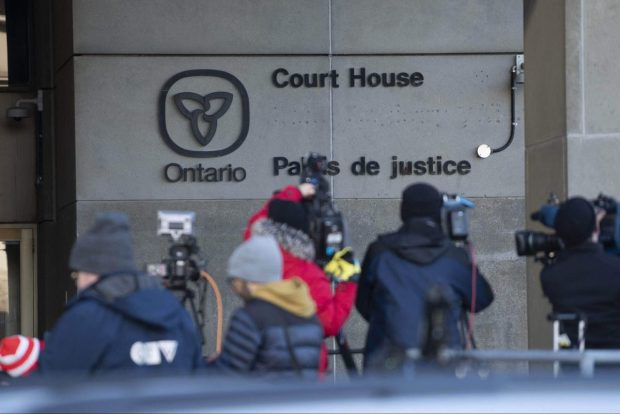For months now, hundreds of college coaches have met one-on-one with their athletes to deliver a message: We no longer have room for you on our roster.
By the dozens, individual schools have trimmed their sports rosters as they prepare to meet new roster limits imposed as part of the House settlement agreement. Hundreds of Division I athletes — many of them in football, swimming, track, men’s volleyball and cross country — have either voluntarily left their team or been removed from their team during this roster purge.
Advertisement
Now, if a plan under discussion is finalized, many of these roster spots could be restored in a grandfathering-in effort that protects the roster spots of those athletes currently on a team, those who have already been cut this year and, perhaps, even some of those high school recruits who committed to a roster position only to see it eliminated.
During meetings this week among NCAA and power conference executives and attorneys, a proposal to phase-in the new roster limits has emerged, multiple sources tell Yahoo Sports. However, no plan has been finalized as leaders work to find the solution to a judge’s order last week to protect athletes on existing rosters and assure the approval of the settlement — an agreement expected to usher in revenue sharing with athletes.
Such a move — the grandfathering-in of roster positions — comes with a bevy of questions, concerns and uncertainties.
Will schools be mandated to grandfather-in roster positions? Or will it be voluntary?
Advertisement
What of players who have already transferred elsewhere? What happens to recruits who signed with other schools because their original commitment wasn’t honored?
And, most notably, how exactly will the judge react to whatever proposal is put forward?
Many schools have already made decisions on roster numbers based on the Judge Claudia Wilken’s preliminary approval of the settlement. (Isaiah Vazquez/Getty)
(Isaiah Vazquez via Getty Images)
Power conference athletic directors, many of whom have already made roster decisions and subsequent budget moves, are now faced with the possibility of undoing them.
“It makes it difficult because there are institutions — including ourselves — that have already had conversations with head coaches about roster limits and some of those coaches have already had conversations with those particular individual student-athletes,” Baylor athletic director Mack Rhoades told Yahoo Sports last week at College Football Playoff meetings in Dallas. “How do you go back to do that?
Advertisement
“What will be interesting moving forward is, is this is a mandated grandfather-in or is it optional and each school will choose how to do that?” he continued. “If it’s mandated, there’s some work to do. There are schools, programs and coaches and ADs who are going to have to undo some of those conversations.”
The particulars of the solution that attorneys will submit to the judge remain unclear. They are faced with a deadline of next Wednesday to file a responsive brief with the court in an effort to appease the concerns raised by California Judge Claudia Wilken, the presiding judge in the case. In a ruling last week, Wilken made clear that she would approve the settlement if adjustments are made to roster limits that avoid negatively impacting athletes who are on existing rosters — a grandfathering-in request that she also recommended during a hearing three weeks ago.
After Wilken preliminarily approved the settlement last fall, college leaders began to implement concepts of the settlement, making key decisions on budget, revenue-generation and roster management — moves that Wilken described in her ruling as “premature.”
However, college executives claim that the settlement’s implementation date — July 1 — necessitated them to begin making decisions before her final approval of the deal, most notably in an effort to afford athletes time to join other programs if their spots were eliminated. Some athletes even made those decisions themselves, choosing to leave a team if they assumed they would not make the roster cut.
Advertisement
“Kids have made a lot of decisions. Some have transferred, some have not,” Michigan athletic director Warde Manuel told Yahoo Sports at the CFP meetings in Dallas last week. “We’ve already made budget decisions, in our case, expecting to have almost 140 fewer student-athletes. When it came out yesterday, I asked my staff to run the numbers about what it means and what we have to put back into the budget. It does have a financial implication.”
Manuel says he’s long been a proponent of phasing-in roster limits.
“This is what we should be doing,” he said. “I’m glad she’s decided to force a step-down period to this number as opposed to just immediately doing it. It was wrong for us to go to the (roster) number in just one year.”
How attorneys word their responsive brief is of significance.
Advertisement
The current belief among multiple college administrators is that the brief will permit schools, at their own discretion, to protect or grandfather-in any current player on a roster and those cut this year due to roster limits. A school would be expected to track their protected roster spots with a rolling list of exceptions. Those protected athletes would presumably roll off the exception list as their eligibility expires.
But for how long can these exceptions be guaranteed spots? Though scholarships are guaranteed for athletes currently, roster spots are not guaranteed right now, says Nebraska athletic director Troy Dannen.
Dannen holds the belief that there should be no national roster limit standard, and these decisions should be left up to the individual schools. Under that plan, some fear that blue-blood programs would over-sign players to rosters. He doesn’t buy it.
“The experience with the transfer portal has shown that stockpiling rosters with transfer athletes will be less of an issue because the athletes want to go somewhere where they can play,” Dannen told Yahoo Sports. “The logistics of no roster limits are simpler than grandfathering and everyone carrying different rosters for the next four years.”
Advertisement
Or will it be even longer for some? There is consideration to grandfather-in high school seniors who committed or enrolled at a school under the promise of a roster spot, though those details are not finalized.
Given recent eligibility lawsuits against the NCAA, will protected roster spots extend beyond even five years? Several players have won cases that jeopardize the NCAA’s enforcement of its eligibility rules permitting a player to participate in only four seasons of competition over a five-year clock.
These are nuances that may or may not be explained in the responsive brief.
“How do you explain these things to the judge?” asked one high-level conference administrator. “It isn’t easy.”
Advertisement
Many other issues persist. Roster limits were crafted by the power conferences with Title IX balance in mind. Title IX, the federal law requiring schools to share benefits equally among men and women athletes, may be impacted based on the grandfathering-in concept.
“If you have to bring back everybody you cut, that’s a disaster,” said one power conference athletic director. “There are some sports still playing and they have made no cuts yet. So that’s not fair for the sports that did. Budgets are set. We’ve eliminated staff positions based on rosters being reduced.”
Wilken, the judge, ordered the parties to consult with mediator Eric Green about the roster-limit modifications and requested that Laura Reathaford and Steve Molo — two attorneys who filed objections to the settlement — be consulted on any changes, as well. Reathaford and Molo, both of whom spoke at the April 7 hearing in Oakland, are likely to push for a more aggressive and long-term solution to roster limits.
Advertisement
“We’re not trying to blow up the settlement,” Molo said during the hearing related to the roster limits. “A settlement has to be fair and reasonable. This isn’t.”
The roster-limit situation has long been a lighting rod of criticism with the settlement, including from the named plaintiff himself, Grant House, who told Yahoo Sports in December that he did not approve of some of the settlement’s concepts, including the roster limits.
Under previous rules, most NCAA sports featured a scholarship limit (different by sport) but few sports had a finite roster cap. As part of the new policy, scholarship caps were removed, replaced by formal roster limitations.
The difference between a sport’s new roster limit and its current roster are drastic in a handful of sports. For instance, many cross country teams keep more than 30 runners on a roster; the new roster limit is 17. Football programs keep as many as 140 on their roster. The football roster cap is 105.
Advertisement
More than 5,000 roster spots are expected to be eliminated in the power conference ranks alone. At Michigan, Manuel planned to reduce his rosters by 140 athletes. At Ohio State, that number was 170.
The roster limits — driven, not by the NCAA, but the power conferences — are a way for college leaders to avoid legal challenges over scholarship restrictions as well as to save money. Walk-ons and partial scholarship athletes cost anywhere from $20,000-$50,000 annually in medical, travel and food costs, officials say.
Manuel believes that’s “worth it” for players who are integral to the culture of a team.
“This is what we should be doing to support our current student-athletes, particularly those in that walk-on position on teams going into their senior year and may have been a significant contributor at practice and part of the culture of the team,” he said. “It’s valuable that we allow them the opportunity to finish their career on those teams.”
This news was originally published on this post .









Be the first to leave a comment